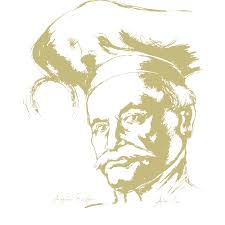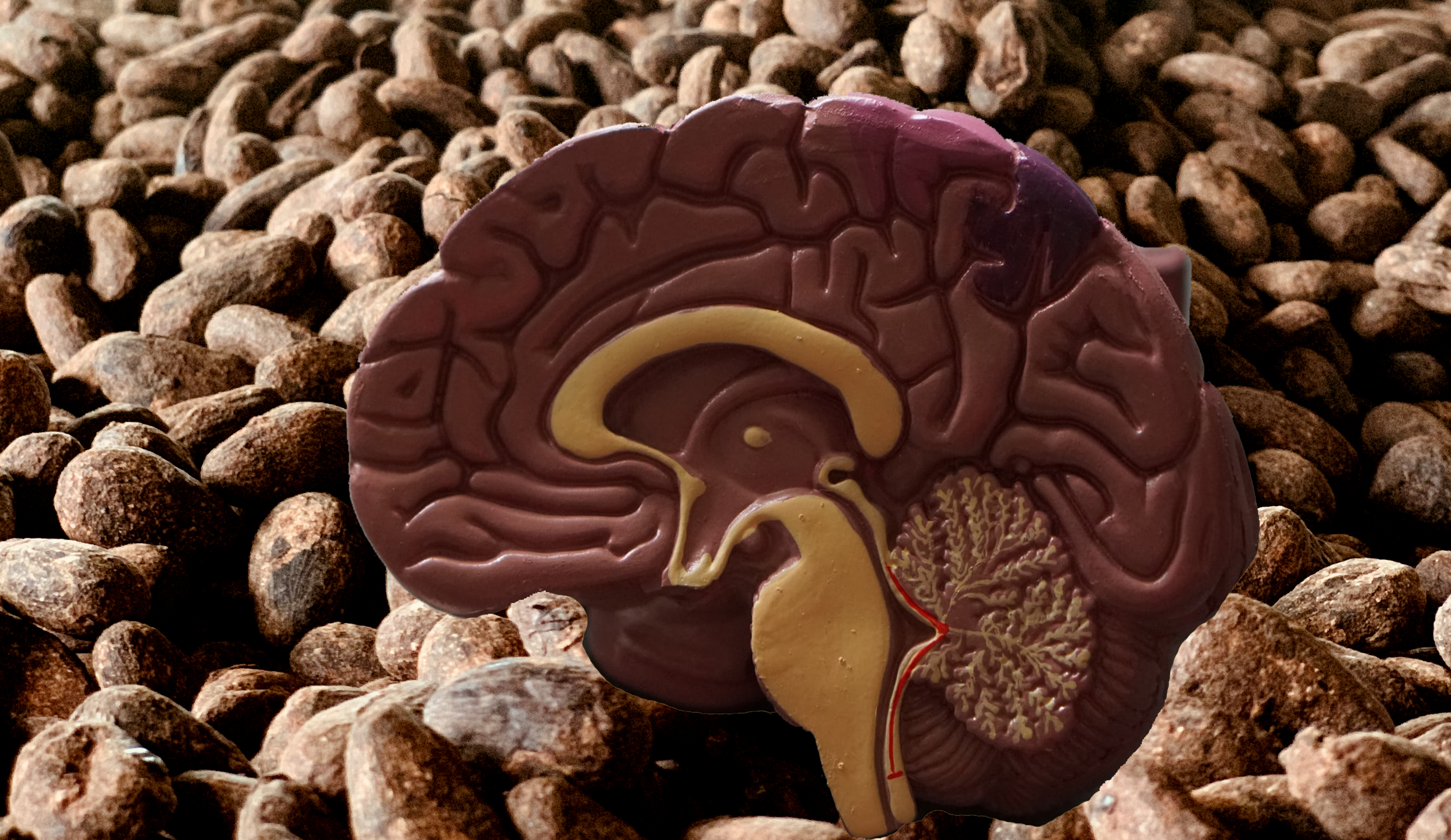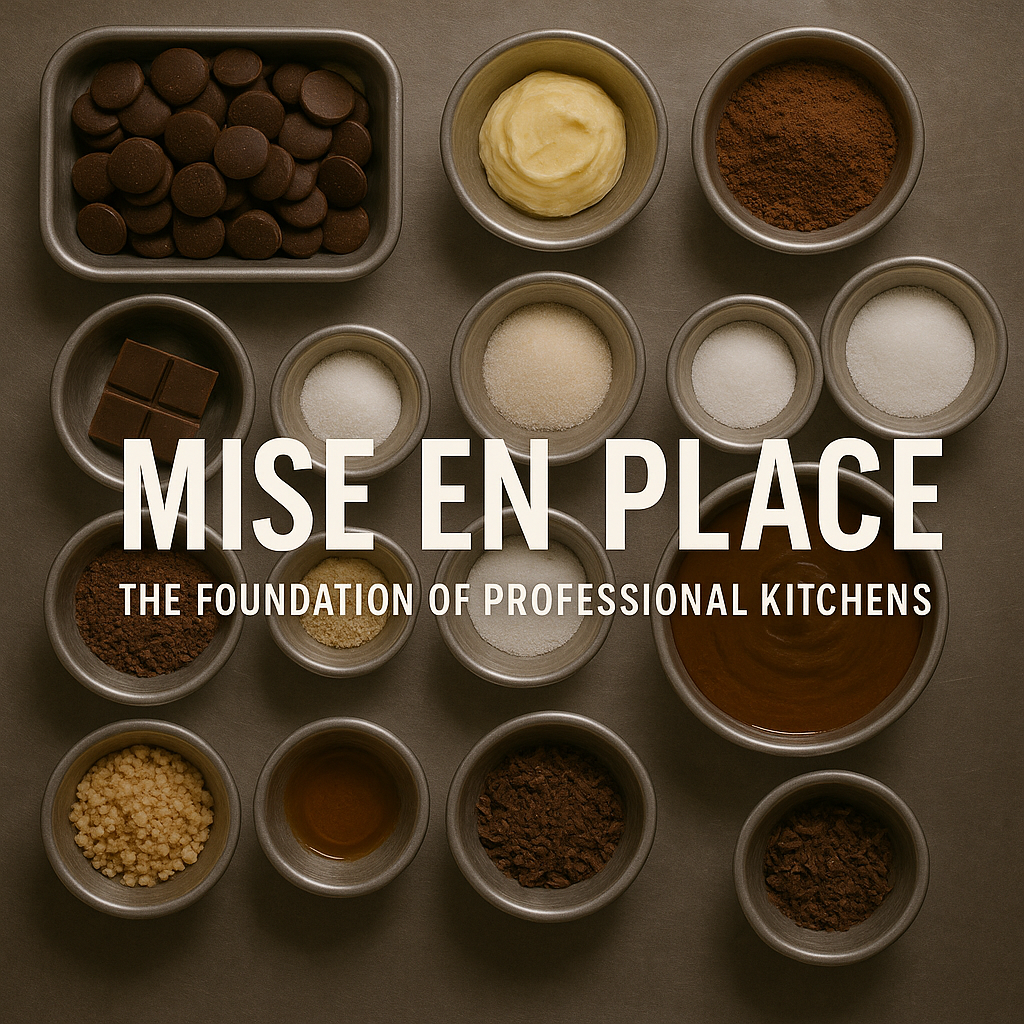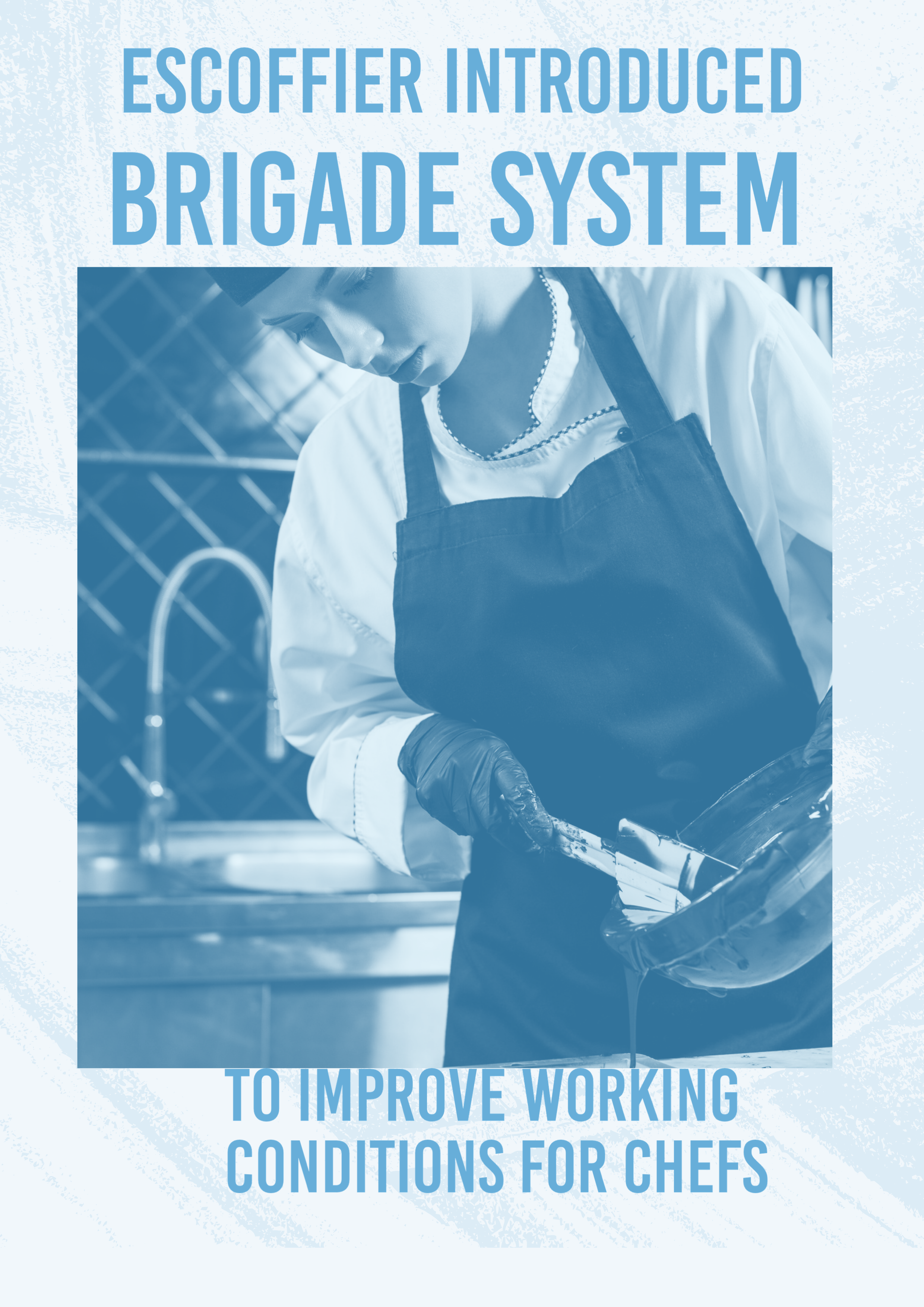Everything In Its Place: Why Mise en Place is the Unsung Hero of the Kitchen
“Rien ne doit être laissé au hasard.”
“Nothing must be left to chance.”
— Georges Auguste Escoffier
The Invisible Ingredient
Behind every elegant plate, every glossy bonbon, and every seamless dinner service lies an invisible ingredient that never appears on a menu: mise en place.
French for “everything in its place,” this deceptively simple phrase is the foundation of fine cookery, the hidden scaffolding behind culinary excellence. It’s a way of working, yes — but also a way of thinking. Mise en place is a commitment to readiness, to intention, and to respect: for the food, the process, and the people behind it.
Whether I’m tempering São Tomé chocolate in a rainforest hut, hosting a cocoa tasting in Yorkshire, or prepping for a fine dining pop-up, one truth remains: nothing great is made without mise en place.

Escoffier: The Father of Order
You can’t talk about mise en place without invoking Georges Auguste Escoffier, the French culinary giant who brought order to the kitchen. Before Escoffier, many professional kitchens were chaotic, noisy, even dangerous places — a frenzied clash of clattering pans and barked orders.
Escoffier introduced calm, discipline, and structure. He gave us the *brigade de cuisine*, the military-inspired system where every chef had a role, a station, and a responsibility. And at the heart of his kitchen philosophy? Mise en place.
> “A place for everything, and everything in its place” wasn’t just a motto. It was a standard. Escoffier believed you should never begin to cook until everything was prepared — measured, organised, and within reach. It wasn’t just about efficiency. It was about respect — for the ingredients, the dish, and the diner.
As someone trained in the 1970s when City & Guilds qualifications still bore Escoffier’s fingerprints, I’ve carried that lesson my entire career. Mise en place is not old-fashioned. It’s essential.
Ritual, Rhythm and Readiness
Mise en place begins before a single flame is lit. It’s the quiet ritual of laying things out:
- Tools sharpened
- Ingredients measured
- Moulds polished
- Stations wiped down
It’s the calm before the storm — except when mise is done well, there is no storm. Just rhythm.
In chocolate work, this rhythm is critical. One forgotten step — an unset mould, an unlevel tray, a missing spatula — can ruin the temper, dull the shine, or worse, waste good couverture.
When I’m teaching students, I often say: discipline is a form of care. It’s how we honour our craft and how we create space for excellence to emerge.
The Mental Mise
Escoffier understood that mise en place was more than practical — it was psychological. Preparing your station is also preparing your mind. It’s your warm-up, your grounding, your moment of clarity before creativity begins.
It’s not unlike meditation: your breath slows, your focus narrows. You become present. And in that presence, you find both control and creativity.
> In that mindset, you don’t just cook. You compose. You choreograph. You perform.
And this isn’t just for restaurants. Whether you’re a chocolatier in Leeds or a cocoa farmer preparing to ferment fruit in Ghana, the same principle applies: readiness leads to calm, and calm leads to quality.
Chocolate: Where Mise Meets Mastery
Chocolate is where mise en place meets its most exacting test. Because chocolate waits for no one. It will not forgive indecision. Tempering curves don’t pause while you go hunting for a scraper.
A chocolatier’s mise is deeply ritualistic:
- Pre-heated tools
- Precisely portioned fillings
- Piping bags clipped
- Moulds aligned like instruments before a concert
In my studio, I often say: before the first pour, the mise is the masterpiece. It sets the tone for everything. You can feel it in the flow of the day — the confidence in your movement, the elegance of your finished pieces.
A Global Gospel
One of the most beautiful things about mise en place is how universally it translates. I’ve shared this gospel of readiness with students and chefs across continents — and it always resonates.
In Togo, I’ve watched local chefs adopt the practice before cooking over open flames. In the UK, I’ve seen young pastry students transform their confidence just by learning to lay out their stations properly. Whether under a mango tree or a heat lamp, *mise en place* levels the playing field.
And for me, this is where Escoffier’s legacy lives on — not just in white jackets and copper pans, but in the discipline, respect, and order we bring to our craft.
Chef’s Tip:
Begin each day — in life as in cooking — with intention. Even if you’re just making a sandwich or a syrup, set your tools in place, clear your space, and give yourself the gift of order. It’s the first step toward mastery.
Did You Know?
Escoffier’s brigade system, built around mise en place, was inspired by his time as an army chef. His belief in “clean stations, calm kitchens” shaped modern culinary training and turned kitchen work into a respected profession.
Before him, chefs were often seen as unruly tradesmen. Thanks to him, we became artisans and professionals.


